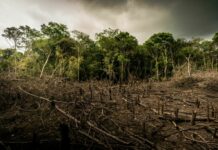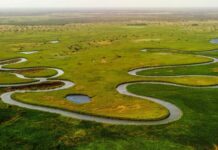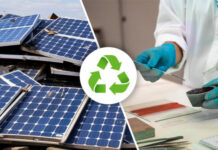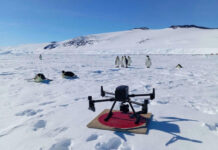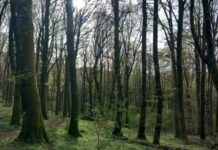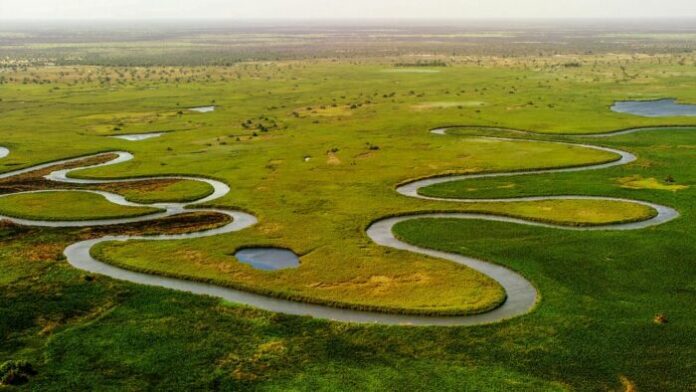
The aftermath of Cyclone Boris has hit Emilia Romagna and Marche, causing 1,500 displaced, two missing, collapses and power outages throughout Romagna to date. More rain and cloudbursts are also expected in other regions. Widespread showers have occurred in Lazio, Campania, Abruzzo, Molise, and Puglia. In Emilia Romagna, some rivers, such as the Lamone, are the same ones that had created problems last year and again previously.
Emilia Romagna is a striking case of the failure of planning and prevention of hydrogeological instability: despite the fact that the region approved a law on soil protection and use in 2017, which intended to reduce consumption to zero by 2050, soil consumption in recent years has continued to increase, placing Emilia-Romagna in third place for soil consumed and in first place for occupation of areas at hydrogeological risk, as revealed by ISPRA’s latest report on soil consumption. Almost 9 percent of Emilia-Romagna’s territory is sealed, a very high value considering that the national average is 7 percent. An even higher value for a fragile territory where almost half of the region falls in areas of medium hydraulic hazard.
The approach with interventions by states of emergency carried out over the past decades, without planning, artificializing riverbeds even more with rectification, embankments, aggregate removal, and vegetation cutting have blatantly demonstrated their ineffectiveness. What happened in 2023 has been repeated. It is more evident and urgent than ever that we need to change the way rivers are managed, as called for by the European Union with the Biodiversity Strategy and the Habitat Restoration Act, with serious planning by river basin district, renaturalizing riverbeds, identifying natural expansion areas, applying Nature-Based Solutions (NBS) and if necessary relocating infrastructure with greater benefit to safety, environmental quality and effectiveness and efficiency in the use of economic resources.
Despite scientists’ warnings about the consequences of climate change and complaints about the fragility and vulnerability of our territory, there are no significant “counter-trend” actions that align with European policies for water management and protection and especially for the restoration of river ecosystems.
ITALY BETWEEN ARTIFICIAL RIVERS AND RENATURATION
In Italy there are at least 11,000 barriers, including dams, weirs, and crossovers (a number that is greatly in default) and many of these barriers are obsolete, no longer even serving the purpose for which they were built and should be removed. Unfortunately, in spite of this situation and while the European Biodiversity Strategy envisages reconnecting and upgrading, including through the removal of barriers (weirs, dams, crossbars…), at least 25. 000 km of rivers in Europe by 2030, in Italy we continue to artificialize rivers, to design and build dams (such as the proposed ones: Vetto dam in Emilia Romagna and Vanoi dam in Veneto), and traverses that interrupt their ecological and morphological continuity, to occupy the areas of their relevance, which are essential to reduce the effects of floods and, ultimately, to increase the vulnerability of the territory. In this regard, WWF Italy has acted concretely by participating in the Open River Foundation’s European call for proposals for the removal of obsolete barriers in rivers and has carried out a preparatory study for the removal of some barriers on the Trebbia River (PC) demonstrating the appropriateness to their removal and the need to ensure a unified management of the basin, which is absent today. In addition and another project submitted for the Esino River (AN) is being evaluated.
The recent European Restoration law obliges us to draw up an environmental restoration plan where rivers will have to play a key role and which should integrate with the objectives of the Climate Change Adaptation Plan, which, after its approval in December last year, is at a standstill without funding and in collective disinterest. By now, climate change is happening and we should focus on initiating concrete policies to restore land resilience especially through Nature Based Solutions.
The Po River Renaturation Project, proposed by WWF and ANEPLA, included in the PNRR for 357 million euros and envisaging 56 interventions in the Po River basin involving Piedmont, Lombardy, Emilia Romagna and Veneto, is proceeding slowly, hostage to the poplar growers who have obtained the write-off of part of the river areas that were supposed to be renaturalized. Unfortunately, what was supposed to be the most important project for renaturation and adaptation to climate change is dragging on with inadequate management unable to handle its complexity. There is still time to “learn” from this first lesson and what is being done in Europe along the Emsher, Rhine, Danube , Drava and many other rivers.
WWF’s “RIVER2RESTORE” report demonstrates how restored rivers strengthen our resilience to climate change and calls for a commitment from all European countries to renature rivers. Restoring the natural form, habitats, flow, and functioning of the river system, including floodplains, by removing barriers and creating more space for nature, enables a multitude of benefits. Restoring important ecosystem services is urgently needed to mitigate the consequences of climate change impacts.
WWF is proposing a European renaturation program starting with: Morava in Austria, Mura- Drava in Croatia, Palokinkosket in Finland, Ammer in Germany, Kalentzis in Greece, Dienvidsusēja in Latvia, Geul in the Netherlands, Vascao inPortugal, Danube Delta in Romania, Bela’ in Slovakia, Guadalquivir in Spain, and Adige in Italy.
The Adige, which at 410 kilometers is the second longest river in Italy: is extremely over-exploited and is currently more like a canal than a river ecosystem. WWF believes that a widespread renaturation action is essential, which would intervene to de-artificialize more than 38 kilometers of canalization to allow the recovery of natural areas of river overflow, the removal of a dam (in Parcines) and 43 minor barrages, to restore ecological connectivity along a 114-kilometer stretch; an action, which seems utopian but would also benefit the Adriatic coast in deficit of sediment precisely because of the river barrages that flow into this stretch of sea. The Veneto coast, by the way, is one of the areas most threatened by climate change as recently highlighted by an international study.
WWF Italy’s proposal follows the one underway in the Po River and should join others, to be included in the environmental restoration plan to be drafted soon, to ensure an adequate Italian contribution to the reconnection of 25,000 km of rivers in Europe.


